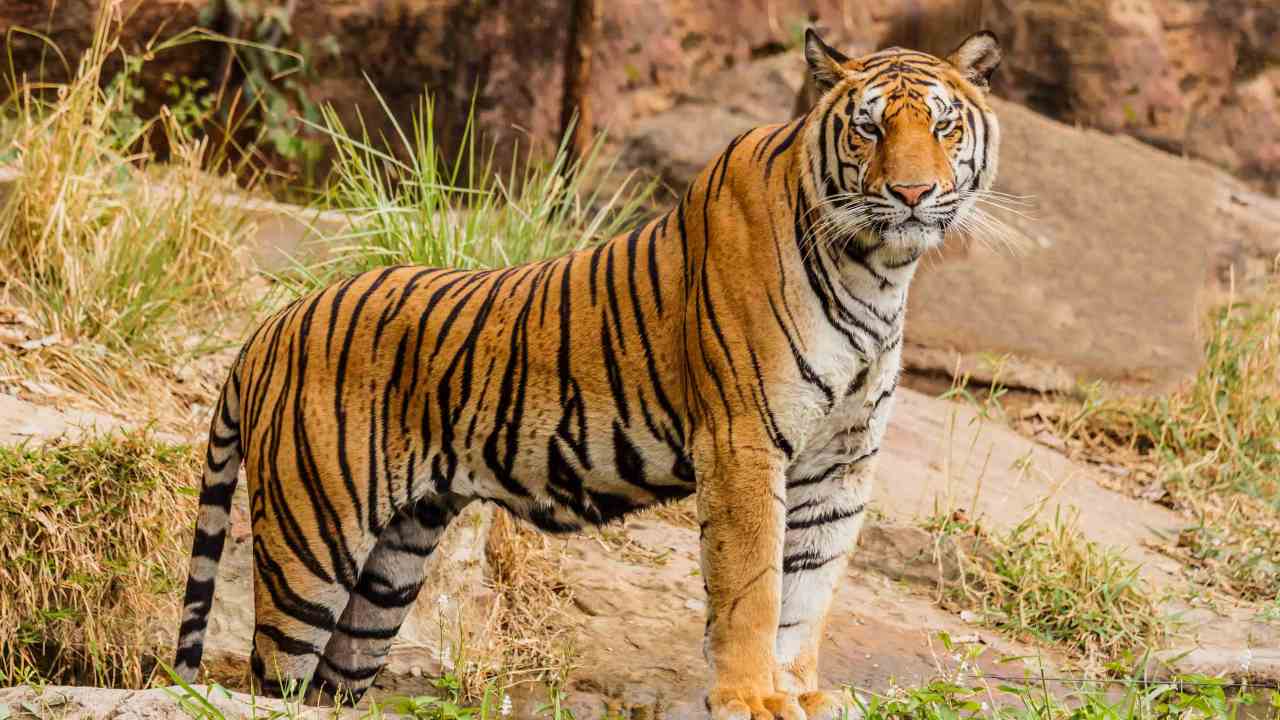Tiger Involves Both Prides And Worry For Kaziranga National Park
Tiger involves Both feelings of pride and Worry for Kaziranga National Park, Why. Assam: ‘Kazi 106F’, nowadays is viral, more so in tweets than for its lofty thunder in the COVID-19 lockdown times.
Depicted as the nation’s just Brilliant Tiger, Kazi 106F developed as the internet based life sensation directly from the second its image tweeted by Uncertainties official Parveen Kaswan turned into a web sensation.
“Do you know in #India we have a Brilliant #Tiger moreover. The main documentation of such a huge feline in the 21st century on the planet,” Kaswan tweeted while posting the viral picture.
Photos of this solitary ‘Dark-striped cat tiger’ or ‘Strawberry tiger’, were clicked by natural life picture taker Mayuresh Hendre on the planet legacy Kaziranga National Park of Assam.
Back in the midst of the tall elephant grass of the celebrated national park, the Brilliant Tiger is prominently known as ‘Kazi 106 F’ and, as indicated by Rabindra Sharma, Exploration Official, the National Park has got four of, all pictorially archived.
A progressively concerned Sharma said that “the finding of this novel individual isn’t a reason for festivity, however a sign for us to begin considering about better availability among the divided populaces of tigers to forestall one of the significant issues of populace decay, that is inbreeding.”
Kazi 106 F, the tigress with lighter yellowish skin with lighter dark stripes and progressively whitish articulations in the stomach and in the facial locale was photograph caught in the year 2014 without precedent for Kaziranga during all India tiger checking exercise.
She was additionally a camera caught in the year 2015. In the year 2016, she was camera-caught with one more tiger. She was again camera-caught in the ongoing camera catching of 2017. At this point, she had crossed the base age of 4-5 years.
Sharma said that Tigers found in Kaziranga territory are not quite the same as the remainder of the world as in regional personal conduct standards and this makes a point by point concentrate on them much all the more fascinating and testing. He clarified that “The skin of tigers is orange-yellow with dark stripes and whitish stomach district.
The yellowish foundation is constrained by a lot of ‘agouti qualities’ and their alleles and the dark shading stripes are constrained by ‘dark-striped cat qualities’ and their alleles. Concealment of any of these qualities may prompt shading variety in the tiger.
Agouti qualities cooperate with the shade cells to deliver yellow to red or earthy colored to dark articulation. This association is liable for making unmistakable light and dull groups in the hairs of creatures, for example, the agouti here same is going on in our tigress – Kazi 106 F.”
Shading deviations are not exceptionally basic events and are recorded uniquely in barely any episodes in nature. We have seen white tigers in zoos. A couple of years back, during 2008 camera catching, the nearness of dark tigers was uncovered in the wildernesses of Similipal Tiger Save.
Different types of hues have been recorded in tigers in zoos or in not many wild cases. It might be stripe-less white, with diminished stripes, lighter yellowish, darker whitish, typical light yellowish, ordinary, ordinary profound yellowish, rufous, tanish with dim stripes, caramel without dim stripes, blue-melanistic, or dark melanistic.
Rabindra Sharma contemplated that the natural reason for shading distortion might be because of unreasonable inbreeding brought about by environment annihilation and loss of availability.
The latent qualities are appearing because of inbreeding inside a divided populace. “I think the inbreeding is my the decision and not driven by impulse as there are 15 females and 13 guys in the gathering of Kazi 106F. There is a lot to learn for the regional example of the tigers of Kaziranga,” the scientist included.
In an as of late led tiger statistics by photograph catching technique, Kaziranga National Park recorded 121 Tigers. The recreation center holds the pleased qualification of being home to the nation’s most noteworthy thickness of tigers.
The province of Assam has four tiger stores shockingly, the Kaziranga National Park, The Manas National Park, Orang National Park, and Nameri National park. The state had only 70 tigers in 2006 and has in this way recorded over 250% development.
The examination group of Kaziranga is of the feeling that the brilliant tiger is a grown-up now and more likely than not conceived an offspring. It will be intriguing to know whether the whelp conveys the “Same brilliant tint”.




